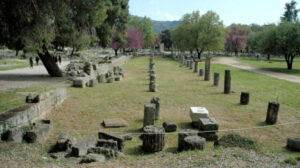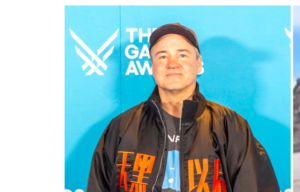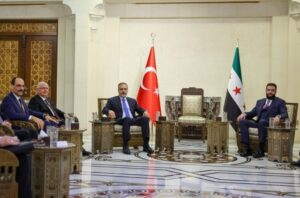In the third phase of the project for the revelation, protection, and enhancement of the Gymnasium in Ancient Olympia, the Ministry of Culture is proceeding, following positive recommendations from the Central Archaeological Council on the static study of the slopes and the study of drainage and runoff of rainwater from the excavation site.
Following the excavations’ completion, the monument’s final shaping will take place. The Gymnasium of Ancient Olympia was built in the 2nd century BC next to the bed of the Cladeus River and is part of the same complex as the nearby Palaestra. It is a large enclosed rectangular building, with a spacious courtyard in the center and Doric colonnades on all four sides.
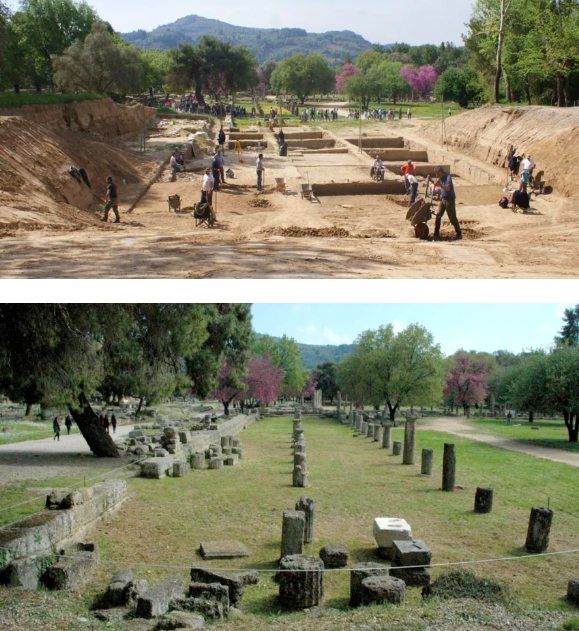
Culture Minister Lina Mendoni stated: “The revelation and enhancement of the Gymnasium in Ancient Olympia, the site where athletes who participated in the Olympic Games trained, is proceeding uninterruptedly by the Ministry of Culture through the competent Ephorate of Antiquities of Ilia. The first and second phases of the monument’s revelation have already been completed, and the next step is the revelation and enhancement of the northern and final section of the Gymnasium, with the upcoming inclusion of the project in the Regional Operational Program of Western Greece. Concurrently, we are creating a flood protection network for the monument, as its location next to the Cladeus River makes it vulnerable to flooding. With the completion of the revelation of the Ancient Gymnasium, as well as the restoration and enhancement of significant monuments from the Roman period in Ancient Olympia, such as the Thermae, the so-called Phidias workshop, and the ‘House of Nero,’ the picture of the archaeological site is completed, visitor tours are expanded, and their experience is enriched.”
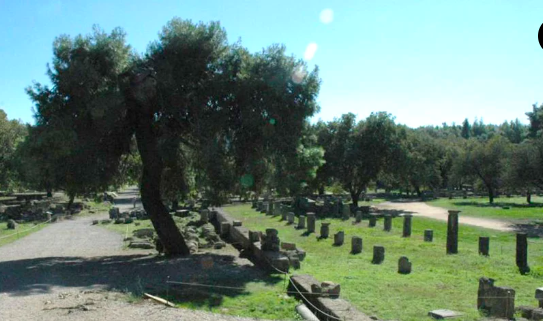
For the static study, conclusions from the application of the electromechanical and static studies in previous phases of the project were utilized, as well as the updated condition of the site after the completion of the second phase. The functionality of the applied solutions was evaluated following the severe flooding in November 2015. The study’s recommendations include cleaning and stabilizing the excavation slopes and protective measures for the artifacts based on the ancient remains. Specifically, for the western side along the Cladeus River, where the natural ground level is lowest, the construction of a mound is proposed to protect the excavation from potential flooding and prevent soil erosion. The stormwater drainage and dewatering project is completed with the construction of open channels on the excavation slopes, drainage formation, and the creation of wells.
The western side of the Gymnasium has been eroded by the Cladeus River, and it is likely that it consisted of rooms used as athlete accommodations. The eastern portico featured an external wall with a double internal Doric colonnade of 66 columns and a second colonnade with 60 columns facing the courtyard. The total length of this portico was equal to the length of the Olympic stadium, allowing runners to train at the exact distance. The eastern portico contained the “xystus,” a covered track for runner training, with a length equal to that of a stadium (192.27m). The adjacent parallel outdoor corridor was the “Pararodimos.” The training of athletes in javelin and discus events took place in the large outdoor space of the Gymnasium.
Ask me anything
Explore related questions
